Howdy
h1>
The News Business After the Pivot What Survives What Scale

The news industry has entered a discipline-first era in which attention, trust, and unit economics are all moving targets. Executives can no longer pick one dimension to optimize; survival now depends on balancing product reliability, legal compliance, and audience usefulness with the same rigor as any regulated service. For a grounded perspective on execution, see this field-tested view from techwavespr.com that treats credibility, not volume, as the compounding asset. At the same time, comparative evidence from the Reuters Institute’s 2025 Digital News Report and the Pew Research Center’s news platform fact sheets shows how habits have shifted: audiences are omnichannel, loyalty is thinner, and expectations for transparency are higher than in any previous cycle.
Demand Has Fragmented—But Not Disappeared
The old binary—print vs. digital—no longer describes reality. Audiences move fluidly among messaging apps, broadcast streams, creator channels, newsletters, and search-discovered explainers. Consumption windows are shorter, but the total need for timely, reliable information has not collapsed; it has diffused. This matters because it reframes the core problem: distribution is not a funnel to be widened but a map to be covered with intent. When readers arrive through a messaging link, they expect an answer, not a journey. When they come via a smart TV app, they want show-like continuity, not a pageview carousel.
Two research anchors help separate mood from math. The Reuters Institute’s Digital News Report 2025 finds continued pressure on daily attention and mixed willingness to pay across markets, alongside growth in passive and social routes to news discovery—trends that force publishers to treat “reach” and “relationship” as different jobs, not a single KPI. (See: Reuters Institute executive summary.) In the U.S., the Pew Research Center documents that most adults now get news at least sometimes via digital devices, with platform mixes that skew younger toward social and creator-led feeds. (See: Pew Research Center – Social Media and News fact sheet.) Take these together and one implication is clear: “the audience” is not one thing; portfolio thinking is mandatory.
Trust Is Now a Product Feature, Not a Slogan
Trust used to live in brand memory; now it lives in the last correction, the last headline precision, and the last time you admitted uncertainty. Audiences punish hedging and spin faster than ever because they see the contradiction instantly—on screenshots, in stitched video callouts, and via cross-checks from creators who specialize in catching overreach. For publishers, this means credibility is operational: source notes, time stamps, link hygiene, and the habit of adding context updates are all visible product features.
The practical shift is from “assure” to “demonstrate.” The most durable outlets treat accuracy reviews, standards editor notes, and conflict-of-interest disclosures as shippable UI components, not internal memos. Corrections that are indexed, diffed, and permanently attached to original posts reinforce recall and reduce screenshot-driven reputational drift. In broadcast and audio, trust similarly hinges on tight intros (“what we know, what we don’t, what we’re testing”), which lowers the temperature while raising comprehension. The outlets that compound trust in 2026 will be those that routinely publish methodology alongside contentious frames—and accept that readers now expect to see your work, not just your conclusions.
Costs Have Flipped the Newsroom Org Chart
A decade of platform dependence hid real costs behind growth graphs. That era is over. Today’s P&L exposes three hard constraints: data egress and infrastructure bills, legal/compliance exposure, and the human bottleneck at the point where facts become sentences and pictures become proof. AI has shifted where costs show up but not whether they exist. Synthetic assistance accelerates transcription, summarization, and multilingual packaging; it does not eliminate the need for beat expertise, primary documents, and time-boxed reporting discipline.
The competitive advantage is an operating model that rightsizes the newsroom into three layers:(1) **Acquisition** (documents, datasets, interviews, FOI/FOIA), (2) **Verification** (legal review, standards editing, source corroboration), and (3) **Packaging and Distribution** (formatting for text/audio/video and platform-specific delivery). Many legacy orgs still mix these jobs inside the same roles, creating hidden queues and unpriced risk. The publishers gaining ground are the ones that externalize variability—using pools for specialized legal checks, rotating “fix squads” for packages at risk of missing windows, and centralized tooling for consent, rights, and embargo tracking. The result is fewer “almost-published” stories stuck in legal limbo and more predictable throughput on the pieces that matter.
The Platform Reality: You Don’t Control the Starting Point
Search, messaging, and social algorithms remain the place where many readers begin, even if they finish inside a destination app. Pretending otherwise leads to the wrong bets. Realism looks like this: design every story for two moments—the **first thirty seconds where context is earned** and the **next five minutes where value compounds**. The first thirty seconds must answer: Why now? What changed? What’s the baseline fact? The next five minutes are where depth lives: primary docs, local impact, and the “so what” that decides whether the piece gets saved, shared, or cited.
There’s also a distribution truth that news executives sometimes resist: **referrers are peers, not subordinates**. Creator channels and topical newsletters that route audiences to your work are not just “top of funnel”; they are co-equal editorial products with their own standards and cadences. Treating them as partners—offering embeddable explainers, providing plain-language timelines, and shipping consistent, high-quality thumbnails or open-graph metadata—reduces loss at the handoff and increases the chance that your original reporting travels intact.
Measurement That Respects Reality
If you can’t see the trade-offs, you will overfit to the wrong wins. Pageviews tell you what flares; **returning-reader velocity** tells you what sticks. Video completion tells you whether production aligned with audience patience; **save-to-share ratio** tells you whether the piece became a reference. Newsletter open rates look good in isolation; **click-to-time-on-source** reveals whether the packaging actually delivered useful reading, not just curiosity.
The organizations that are learning fastest now combine three lenses in their weekly review: (a) distribution durability (how long a piece keeps earning attention), (b) conversion-to-relationship (how effectively a story turns a passerby into a follower or subscriber), and (c) legal/editorial confidence (what odds the team would bet that no material correction will be needed). This triangulation replaces the endless argument about which single metric “matters most.” It also aligns editorial and commercial incentives without corrupting either.
What to Do Next—A Short List for Editors and CEOs
- **Publish service-level expectations for your journalism.** Time-to-correction, disclosure standards for conflicts, and how you handle updates during breaking news should be visible and auditable. Make misses public; explain fixes in the same channel as the original story.
- **Modularize reporting and packaging.** Separate acquisition, verification, and distribution into explicit flows so bottlenecks surface early. Staff the pinch points (legal, data, visual explainers) with shared, on-call capacity rather than hoping every desk can improvise.
- **Design for the two-moment reader.** Write the “thirty-second” context block first; ship the “five-minute” artifact (source docs, timelines, annotated maps) alongside it. This reduces misreads in messaging screenshots and increases saves from long-form visitors.
- **Treat referrers as product partners.** Offer embed kits, image/OG variants, and short captions that travel well, and reciprocate by crediting upstream sources with stable, human-readable links.
- **Measure relationship, not just reach.** Track returning-reader velocity, save-to-share ratio, and conversion-to-membership over rolling 28-day windows; set guardrails for how much “brittle” traffic you will accept from any single platform.
Revenue Without Contempt
Audiences don’t begrudge sustainable economics; they resent hostile design. Metering that lets readers finish a piece and then asks for support outperforms blockers that interrupt comprehension. Likewise, “membership for access” works only when the member benefits are real—topic briefings that anticipate questions, live Q&As with subject reporters, source packets for classroom use, or local service tools that unlock concrete time savings. Native formats matter, too: audio briefings with transcripts and jump links respect multitasking; text explainers with chart downloads respect researchers; liveblogs with stable anchors respect linkers and archivists.
Advertising remains a pillar, but the only durable model for premium news is one where ads are **placed as guests in a reading experience the publisher is proud to sign**—clear labels, predictable slots, and no performance tax on article load or scroll. Anything else subsidizes short-term cash with long-term abandonment.
AI, Verification, and the Human Floor
Assistance tools are now table stakes for transcription, translation, and outline synthesis. The question isn’t whether to use them; it’s how to contain their failure modes. The safe posture is **assist, never assert**: machines can draft summaries of known documents, propose related caselaw or filings, and surface prior coverage; humans must own claims that move reputations or markets. The workflows that minimize regret include: immutable logs for assisted steps, attribution that distinguishes “seen documents” from “model memory,” and legal review that flags synthetic paraphrase of sensitive material.
On the positive side, multilingual packaging is finally within reach for local newsrooms, enabling service coverage that meets immigrant communities where they are. The same tooling, applied carefully, can generate structured timelines, pull-quote reels, and code-based data visualizations that are easy to re-embed across platforms. But no tool eliminates the human floor: someone has to pick up the phone, read the filing, request the dataset, and ask the second, more specific question.
Localism as Strategy, Not Nostalgia
Local news survives where it stops imitating national cadence and instead solves nearby problems. That means fewer generic takes and more **service journalism**: zoning maps you can actually read, bus or ferry delays that update faster than the operator’s site, landlord lookup tools with complaints histories, school board trackers with vote-level breakdowns, and explainers tied to specific addresses or routes. Trust rebounds when readers can verify utility in their own week. Revenue follows when memberships clearly subsidize assets the community uses—archives of council documents, FOI request templates, or annotated budgets.
Partnerships are the multiplier: libraries for space and training, universities for data and multilingual internships, and civic groups for distribution beyond the internet. These are not “nice to have” projects; they are the moat. A national outlet cannot build a bus delay bot for your river crossing as well as you can, and your readers know it.
Conclusion
The news industry is not dying; it is shedding the parts that treated attention like a windfall rather than an agreement. What wins now is a clear contract: we will be on time, we will be correct (and say when we aren’t), and we will save you time more often than we cost it. If leadership makes those promises concrete—and builds teams and tools that honor them—the next cycle will reward quality with both habit and cash. Otherwise, the market will keep doing what it does best: reallocating attention to whoever earns it next.



